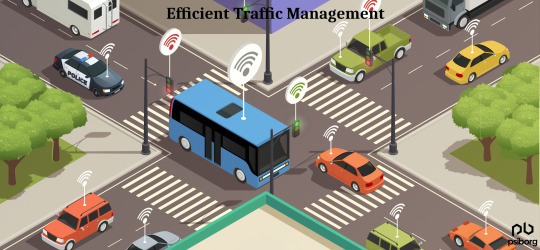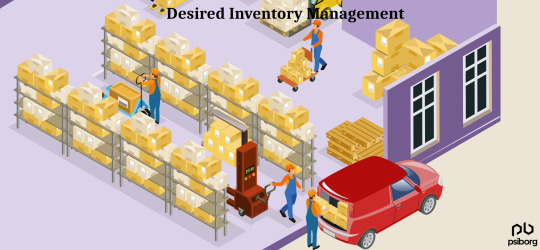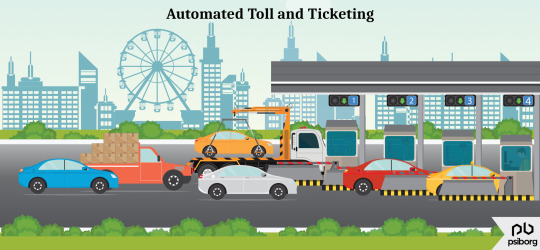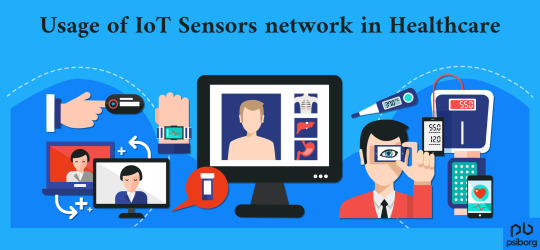Don't wanna be here? Send us removal request.
Text
Real-Time IoT-Based Staff Tracking System
PsiBorg’s real-time staff tracking system uses IoT technology to monitor workforce location, activity, and productivity. It helps businesses ensure safety, accountability, and operational efficiency through live tracking, automated attendance, and insightful analytics, all from a centralized dashboard.
0 notes
Text
HOW IS THE IOT DASHBOARD USED IN TRANSPORTATION?
What is the Internet of Things?
The term “IoT” refers to a system in which commonplace everyday objects are linked to one another over the internet and are able to exchange data with one another. IoT is the system where operations can be integrated, and information can be conveyed and acted upon in real time. As technology gets smarter and the transportation industry continues to facilitate new technologies into their system, with more devices, objects and vehicles can communicate with each other in real-time by exchanging data and working efficiently. Some of the current IoT applications in logistics and transportation are listed below.

IoT based traffic management system
To solve traffic control problems in the real-time , a smart traffic monitoring system is required and IoT plays an important role in it. This IoT based traffic management system is very useful in controlling traffic more effectively and so road traffic, infrastructure, vehicles, street lights, pedestrians can be managed in a better way. 5G, 4G wireless connectivity is the backbone of this system. Following are the technologies required for an IoT based traffic management system-
Communication
For short range communication, mostly radio frequencies UHF (Ultra High Frequency) and VHF (Very High Frequency) are used. Similarly, a global system for communication using mobile phones is done using GSM or 3G.
Video-vehicle detection system
Video cameras situated in different parts of the road feed videos into processors that identify changing characteristics of the passing vehicles. This information is constantly monitored and decrypted, which allows the operator to process and the output comes to be the vehicle speed, lane occupancy, wrong-way vehicle alarm, etc.
Sensing System
Sophisticated sensors are placed in and around the roads to detect the speed, length and class of the vehicle even from a distance. Inductive loops are placed on the road to detect vehicles through magnetic loops. These sensors can work on both high and low speed vehicles and the magnetic sensor technology can even reveal the number-plate, which can help in catching criminals.
GPS Monitoring
GPS, smartphones and sensors are used to detect the traffic speed, density and road blockages.
Dynamic Traffic Light
RFID sensors are used to maintain a dynamic traffic light sequence, in addition, a proper algorithm with the database can help the RFID work easily to detect real-time data from each lane.

Smart cars
Smart transportation system using IoT is incomplete without smart cars. Just a few years ago what we used to see only in sci-fi movies are now a reality. With the increasing number of private cars, traffic congestion and pollution are becoming a major concern, so to reduce this environmental hazard, smart cars have been introduced. Listed below are some of the features of a smart car-
Communication
Sure, you can communicate with your car, but did you know that smart cars can communicate with each other as well? This helps avoid road accidents and also helps reduce fuel consumption by creating road-train.
Solar and Electric Roadways
A network of electronically powered roads is made for electric vehicles using the open-source project TEV ( Tracked Electric Vehicle System). Some countries like Sweden and South Korea have already implemented this technology.
Self-operating
Now, driving your own car isn’t a problem as well with the advent of self-driving cars.
Automobile Industry
Here are some of the advantages of IoT in the automotive industry-
Autonomous Vehicle
Semi-autonomous vehicles are very popular today. They assist drivers with driving, parking, braking, road changing, etc., but developers today are attempting to make vehicles fully autonomous that can drive without the assistance of a human driver.
Automotive Maintenance
Predictive analysis can be done by collecting data from the sensors, sharing them on a platform and then processing it by an algorithm. This helps drivers make cost-effective and time-saving decisions. Alerts are also sent to the dashboard of the driver in case of any malfunctions. With all of this, the driver can make sure their vehicle is in the best condition and repair the parts before they break.
Fleet Management
Business owners now want to track their fleet in real-time. IoT in commercial vehicles is gradually getting adopted that has led to improvements in operational efficiency, maintenance cost, fuel consumption, etc. Some of the key factors of fleet management are GPS tracking, geo-fencing, customized dashboards that have helped business owners make intelligent decisions in real-time.
Connected Vehicles
All vehicles in IoT based smart transportation are connected through a network called CV2X ( Cellular Vehicle to Everything). Further CV2X is divided into the following categories-
Vehicle to Vehicle(V2V) — This connection allows vehicles to connect with each other. They exchange data related to speed, location, etc. This results in less accidents taking place on the road.
Vehicle to Infrastructure(V2I) — This connection is between vehicles and infrastructure that includes traffic lights, lane markings, etc. This helps to facilitate smooth traffic flows and to avoid queues at petrol pumps.
Vehicle to Pedestrian (V2P) — A pedestrian can connect to the CV2X using their mobile phones to locate nearby public transportations and their arrival time. They can also check the pedestrian walking system and the change in traffic light signal.

Commercial Transportation
Another application of IoT in transportation is commercial transportation. Sensors connected monitor and communicate in real-time about the status of fuels and other aspects of the vehicle with the operators or the drivers. Getting alerts about any malfunction beforehand helps reduce the breakdown and tow bills. In addition, there are sensors to monitor the health of the driver to avoid accidents.
Aerial surveillance
Drones are the best examples of IoT based aerial surveillance. Drones have been around for quite some time now and people have used them for a hobby. But now, drones are being used for commercial purposes too, like sports, photography, research, military missions, etc. With a massive growth of IoT in the industrial sector, drones are now performing tasks that are expensive or dangerous for humans to do.
IoT in Rail Industry
One of the main challenges faced by railroad operators is how to integrate all their devices and communicate with each other, or to communicate with the stations. IoT has solved this problem . In fact, according to Cisco in the next 15 years approximately $30 billion is going to be spent on IoT in railways.
There are three major areas in railway where IoT automation can be beneficial-
IoT along with Big Data can be used to visualize commuter traffic up to two hours in future. This can allow the operators to forecast any disruptions in the service that may enable them to avoid the ripple effect caused due to one delay.
Auto Engine Stop (AES), is a technology that is used to lower the amount of fuel consumption and to reduce the emissions from locomotives. It saves fuel by automatically shutting down the engine when the vehicle has been standing idle for a very long time, and when the vehicle has to move again, the engine automatically restarts. This technology can be achieved by generating large amounts of data about the vehicle, speed, mileage, location, etc.
Another great way in which IoT can be used in the rail industry is, by using new generations of sensors, onboard computers and sophisticated dispatch stations that work together as a train management system. This management system bridges the gap between the train and dispatch systems through communication hubs. This can address complicated conditions like when the train is running at a high speed, in extreme weather conditions, or even through long tunnels.
The Indian railway network being the fourth largest in the world could benefit a lot by incorporating IoT in Indian Railways that may help in better tracking the trains and may help in preventing the delays and the ripple effects caused by them.
So, these are some of the ways in which IoT has helped in the transportation sector. In the future, vehicles are going to be more and more automated to help humans in various ways.
A brief description of what we do at PsiBorg, A Full Stack IoT Development Company.
We are a group of young and active electronics design engineers, firmware and software developers that work together to build near-perfect goods in every way.
We have developed a wide range of home automation apps and security systems for our clients; if you are searching for a team to help you turn your concept into a product, you have come to the correct spot.
1 note
·
View note
Text
USAGE OF IOT SENSORS NETWORK IN HEALTHCARE
What are IoT sensors?
The Internet of Things in healthcare is one of the most important and promising technologies today and sensors play an important role in it. A device that is capable of detecting changes in an environment, a sensor can monitor our health status, air quality, home security and many other things.
These health sensors for IoT technologies have found their way into medical gadgets. Despite the concept being a relatively new one, it’s already closely entangled with healthcare. So much that it has a commonly coined term for it- “Internet of Medical Things”.

What are the benefits of IoT in healthcare?
IoT is nothing short of a revolution in the field of healthcare. There are four primary applications of IoT in healthcare-
Hospital Infrastructure
IoT is incorporated into HVAC (Heating, Ventilation, and Air Conditioning), lighting, electrical demand, people movement and safety in building systems. Using smart devices helps the facility operators ensure patient safety and optimizes their experience. Additionally, it also helps them in energy consumption and provides them with detailed financial information.
For example, the smart light fixtures embedded with sensors can provide optimized lighting according to the patient’s satisfaction and at the same time control energy consumption by providing lighting only at the places where it’s needed.
Patient Experience
As for patient experience, IoT healthcare sensors provide real-time location services to track patients and assets for treatment and safety. Like, an Alzheimer’s patient wears a geo-spatial location badge that can track their location at all times. Now if they wander out of the hospital’s geo-fence, an alarm sets off to notify the staff immediately.
Critical Environment
Health officials can also track and monitor the equipment in the operating rooms, control multiple aspects like the temperature, humidity, pressure, air exchanges, etc. They can also detect volatile organic compounds in the air like escaped anesthetic gases.
Maintenance
With IoT applications in healthcare, predictive maintenance is on the rise, replacing preventive maintenance. Preventive maintenance includes regular maintenance scheduled by the manufacturers whereas predictive maintenance is done only when something needs to be worked on. This way the maintenance process is made more dramatic and effective.
What sensors are used in health care?
Listed below are some of the smart health monitoring systems using IoT-
Remote Patient Monitoring
Continuous Glucose Monitor (CGM) is a device that is the size of a penny which can monitor the blood glucose level non-stop once inserted into the patient’s arm. Such devices can bring huge value to the research and treatment of diabetics starting from providing remote diabetes treatment solutions. The monitored data can be easily accessed via smartphones.
Ingestible Sensors
In 2003 WHO found out that 50% of prescribed medicines aren’t taken the right way or are completely ignored. A smart way of resolving this problem using IoT is developed by Proteus. They have come up with ingestible sensors. These tiny sensors send a signal to the receiving device upon dissolution in the stomach. An amazing creation, this “smart pill” helps reduce the rate of incorrect, senseless consumption of important drug prescriptions.
Mobile Health
Mobile health, also sometimes known as mHealth, is a way of watching one’s health via smartphones. It can truly be a life saver for modern patients, all of whom use smartphones regularly. There are apps that can be used as full-blown healthcare hubs where you can access valuable medical information, analyze your health trends, manage body-inserted IoT sensors and even contact a doctor with a single tap. Smart healthcare is the future.
Smart Hospitals
Hospitals today have become these huge infrastructures with loads of paperwork, long frustrating lines along with overworked doctors and nurses. All these situations can be turned around by implementation of IoT solutions. Long, cumbersome paper registers can be replaced by automated and centralized databases, a single management system can receive the submissions, help control long queues and track the staff through their smartphones. Such innovations and technology in medicine can help reduce the hospital costs, save paper and can make lives of both patients and the hospital staff easier.
Enhanced Chronic Disease Treatment
To effectively detect chronic diseases, health issues need to be monitored and analyzed over a long period. With IoT-powered wearables, sensors and data analysis, this becomes easier and more efficient. With the data collected from these sensors integrated with blockchain and AI can help discover underlying chronic diseases.
How are IoT sensors used in Healthcare?
The sensors collect data from the patients or a doctor/ nurse manually inputs the data.
The data is then analyzed by an IoT device with the help of AI-driven algorithms.
The device then makes a decision to either send the data to the cloud or act upon it.
Doctors are then enabled to make informed decisions based on the data provided by the IoT devices.
Future of IoT in healthcare
There is no doubt that the IoT based healthcare system is the future but it also needs data, high-speed communication and proper security to do so.
IoT Healthcare devices represent the fastest-growing sectors of the IoT market, and with 5G ultra-low latency speed and mobility will be provided.
IoT is already used a great deal in healthcare devices. It is only a matter of time when healthcare and IoT technologies become inseparable and will completely transform the way we approach healthcare.
A brief description of what we do at PsiBorg,
We are a group of young and active electronics design engineers, firmware and software developers that work together to build near-perfect goods in every way.
We have developed a wide range of home automation apps and security systems for our clients; if you are searching for a team to help you turn your concept into a product, you have come to the correct spot.
1 note
·
View note
Link
HOW A SMART AGRICULTURE SYSTEM EMPOWERING FARMERS TO GROW BETTER CROPS?
0 notes